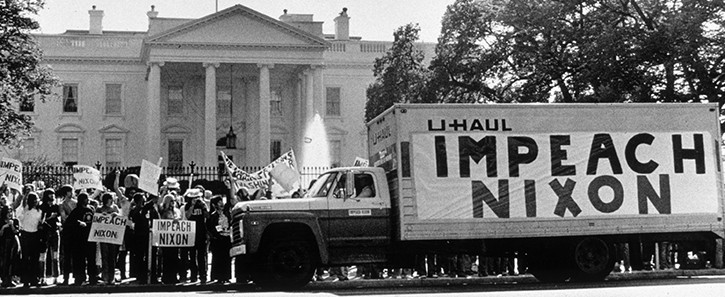

Judicial Watch Uncovers CIA Inspector General’s ‘Watergate History’ Report


Document Reveals Deputy CIA Director Vernon A. Walters and Acting FBI Director L. Patrick Gray Advised President Nixon to ‘get rid of the people involved in the cover-up, no matter how high.’
CIA lawyers reveal to Watergate prosecutors that CIA ‘agent’ Eugenio Martinez participated in June 17, 1972, break-in of Democratic National Committee
(Washington, DC) Judicial Watch today released a new document obtained from the Central Intelligence Agency (CIA) through litigation (Judicial Watch v. Central Intelligence Agency (No. 1:16-cv-00146)) titled: “Working Draft – CIA Watergate History,” that was prepared by the agency’s Office of the Inspector General. The document was, “compiled during the latter part of 1973 and 1974.” The introduction to the agency history states: “Undertaken as an internal CIA review of the matter, it is incomplete and remains a working paper.” The CIA evidently never finalized the report.
The report reveals that Lieutenant General Vernon A. Walters, the Deputy Director of the CIA, met with Acting Director L. Patrick Gray of the FBI on July 12, 1972, to discuss assistance the CIA had provided to retired CIA officer E. Howard Hunt, of the White House Special Investigations Unit (“The Plumbers”). CIA assistance to The Plumbers was terminated in August 1971. The report states the CIA assistance had been at the request of the White House for the purported purpose of tracking down security leaks in the government.
During the July 12, 1972, meeting, Gray told Walters that he had received a call from President Nixon. During the call, “He [Gray] told the President that he had talked to Walters and that both Walters and Gray felt the President should get rid of the people involved in the cover-up, no matter how high. Gray said he had also told this to Dean.”
Also of note is the identification of Eugenio “Musculito” Martinez as the only one of the Watergate burglars still actively being paid by the CIA at the time of the arrests on June 17, 1972. At one point, the report quoted a CIA attorney referring to Martinez, in discussions with lawyers from the Watergate Special Prosecution Force (WSPF) on October 12, 1973, as “an agent.”
“Under no circumstances would the Agency give up all records relating to the Agency’s relationship with Martinez,” the CIA lawyer told WSPF, for to do so would represent “the breaking of trust of an agent.”
This means the CIA, at the time of the Watergate break-in, had “an agent” planted on the break-in team. (The FBI determined that when arrested, Martinez possessed a key to the desk of Maxie Wells, the secretary to Democratic Party official R. Spencer Oliver whose telephone was wiretapped in the Watergate break-in operation.) While Martinez’s dual role has been discussed in other Watergate histories, the declaration by CIA lawyers of Martinez’s status as “an agent” appears to add new information to the Watergate saga.
Totaling 155 pages, the declassified Secret CIA report discusses the national security environment in 1971, specifically the impact of the New York Times publication of the “Pentagon Papers,” unlawfully released by RAND Corporation military analyst Daniel Ellsberg. The establishment of the Plumbers and the CIA support requests for assistance from E. Howard Hunt are also chronicled. Another section of the report details CIA involvement in preparing a psychological profile of Daniel Ellsberg.
With respect to the Watergate incident specifically, the report describes the interaction of senior CIA officials with the Department of Justice, the FBI and White House staff. Official memoranda of record and telephone call transcripts by key government officials such as Director of Central Intelligence Richard Helms and Acting FBI Director L. Patrick Gray are quoted and excerpted at length.
The report features a three-page summary of a November 19, 1973, WSPF interview of James Jesus Angleton, the Associate Deputy Director of Operations for Counterintelligence at the CIA from 1954 to 1975. Mr. Angleton discussed leaks of classified information to the media; reporter Seymour Hersh; the likelihood of copies of the Pentagon Papers being delivered to the Soviet Embassy; “Soviet methods of recruiting foreigners as agents and their use of leaks, i.e., Jack Anderson;” and, the Soviet Disinformation Program.
“This CIA Watergate report is an extraordinary historical document,” stated Judicial Watch President Tom Fitton. “Given it discloses direct CIA involvement in Watergate, it is no surprise it took 42 years and a Judicial Watch lawsuit to force its release.”
###















